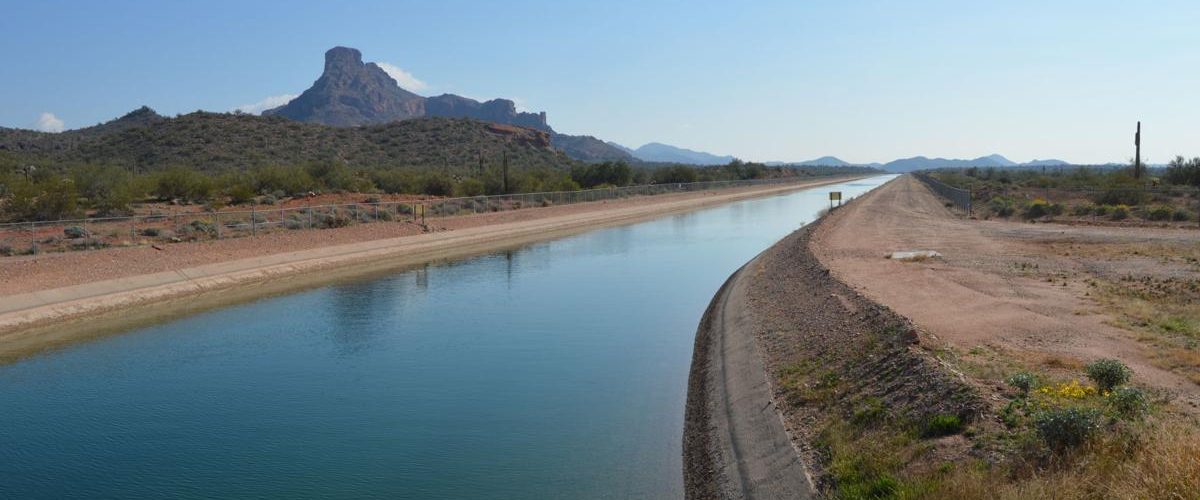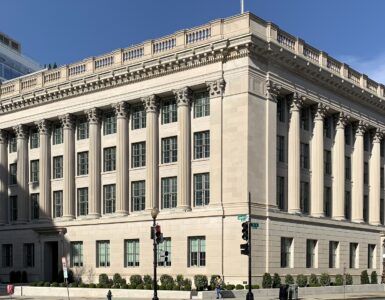Drought is not something that is uncommon in the Southwest United States. However, Arizona has stood out in taking active measures to improve the use of the state’s water resources.
One of the largest supplies of water that the state has access to is groundwater, which makes up 42% of the state’s water resources. The second largest source is the Colorado River, which makes up 36% of the water supply. With the largest amount of water supply for the state coming from groundwater, it makes it a vital resource for the state. By and large most of the water used within Arizona is by the agricultural sector, which accounts for 73%, followed by municipal use at 21%, and the industrial sector rounds it out at 5%.
Groundwater is composed of the water resources beneath the surface of the earth. It is found in natural reservoirs, or aquifers. The sediments in aquifers are filled with different amounts of water, which means some areas can contain more water than others. If there are mass amounts of water being pumped out of aquifers, it can cause damage to the land. Additionally, there can be runoff in shallow groundwater and heavy metals in deeper groundwater.
Early water management
In 1980, Arizona passed the Groundwater Management Act, which protects the users of groundwater and works to decrease the reliance on groundwater statewide, with a focus on heavily populated areas.
Another program in Arizona working towards water conservation turned 35 years old this year: the Central Arizona Project. This diversion canal is a 336-mile diversion system that brings water from the Colorado River to central and southern Arizona. Since its implementation, the CAP has come to provide the state’s largest renewable water supply and serves a total of 80% of the state’s population.
There has been a slew of proposed reforms recently by both Democrats and Republicans in the state Legislature regarding the use of groundwater and its potential overuse in unregulated rural areas.
Both House Bills 2895 and 2896, two bills introduced during the 2020 state legislative session that were introduced in an attempt to regulate the usage of groundwater, failed to pass in the pandemic-shortened legislative session.
Today’s approach to drought
With a history of drought, the state has also attempted to craft assurances that its citizens will not be endangered by a lack of water.
Arizona in 2019 adopted the Drought Contingency Plan (DCP), a multi-state effort with Mexico to keep Lake Mead from falling to drastically low levels. The DCP means collaborative action in order to protect the sustainability of the Colorado River as a water resource for the 40 million people who depend on it.
The creation of the DCP can be traced back to 1922 when representatives of the seven Colorado River Basin states signed the Colorado River Compact ensuring that the river would flow to all the states in the Basin and Mexico.
In 1956, the Colorado River Storage Project Act was signed into law for the construction and regulation of reservoirs in the Upper Basin states. Since the passage of the Storage Project Act there have been many subsequent bills passed to add additional efforts to the storage project plan. However, in 2018 Bureau of Reclamation Commissioner Brenda Burman gave the lower basin states a deadline of January 31, 2019 to create the DCP.
The DCP that was created has many moving parts, which made it longer to compromise for creating an agreement.
Tom Buschatzke, director of the Arizona Department of Water Resources, said about conservation efforts, “It is not easy to achieve that outcome while respecting the unique rights of each State, various Tribes and Mexico to Colorado River water.”
After months of negotiations, the seven different states finally agreed on a plan to cut back the usage of the Colorado River without lasting impacts to any one state.
In January 2019, Governor Doug Ducey signed an executive order creating the Governor’s Water, Augmentation, Innovation, and Conservation Council which has worked to further the purpose of ensuring a long-term sustainable water supply for Arizona.
Arizona’s water management programs and long-term planning have made it possible for there to be 30 trillion gallons of water stored underground to be used in the future if the need ever arises. This amount is the equivalent of water services for the city of Phoenix for 30 years at the current rate.
Gov. Doug Ducey earlier this year said that the issue of water conservation should be planned for the long term.
“We don’t want to deal with this one generation at a time,” the governor said. “It should be focused, strategic and ongoing in terms of water innovation.”
U.S. Senator Kyrsten Sinema, D-Ariz., has echoed this sentiment saying, “Arizona’s future depends on securing our water supply. Our legislation ensures Arizona has the resources to address drought conditions and restore our waterways so we can continue expanding opportunities across our state.”
State business leaders have talked about the issue of the state’s conservation efforts being the key to continuing economic success.
Todd Reeve, director of Business for Water Stewardship, recently spoke on the topic, saying, “We want to be in Arizona forever to invest in communities and jobs and we need to have certainty around water in the long term.”
Taylor Hersch is an undergraduate at Arizona State University and an Arizona Chamber Foundation Junior Fellow.
















Add comment